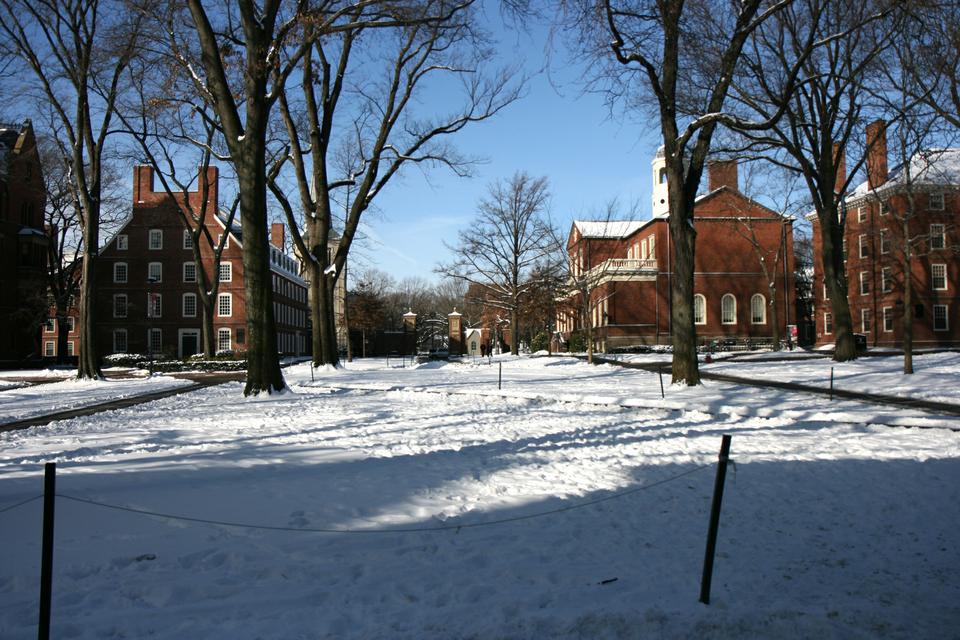
News
Summers Will Not Finish Semester of Teaching as Harvard Investigates Epstein Ties

News
Harvard College Students Report Favoring Divestment from Israel in HUA Survey

News
‘He Should Resign’: Harvard Undergrads Take Hard Line Against Summers Over Epstein Scandal

News
Harvard To Launch New Investigation Into Epstein’s Ties to Summers, Other University Affiliates

News
Harvard Students To Vote on Divestment From Israel in Inaugural HUA Election Survey
Occupy Harvard Dome Violated City Codes

Harvard administrators removed the last vestiges of the Occupy Harvard encampment from Harvard Yard on Jan. 13. Administrators and Cambridge police cited potential safety hazards as reason to dismantle the weather-proof dome and information tent—the only structures remaining after the protest movement decamped in December.
On its website, Occupy Harvard called administrators’ decision to dismantle the dome “a direct reversal of their previously stated commitment to ensure free speech in Harvard Yard.”
Faculty of Arts and Sciences spokesperson Jeff Neal said that safety was the motivation behind the seizure of the dome and information tent.
That day, winds reaching 45 miles per hour had caused the dome to move several feet and collapsed the tent, Neal said in an email, adding that the dome nearly struck a passerby.
Derin Korman, a teaching fellow in Visual and Environmental Studies and Occupy Harvard supporter, said that he and other protesters removed the tarp covering the dome after the structure was uprooted. Protesters then transported the tarp and the other loose objects kept in the dome to Phillips Brooks House for storage.
On its website, the Occupy Harvard group stated that protesters understood from a conversation with a grounds manager that they could keep the dome in the Yard as long as it was secured. They held an emergency general assembly in which they made plans to affix the dome to the ground.
But Director of Facilities Management and Operations Zachary M. Gingo and Associate Dean for Physical Resources and Planning Michael N. Lichten then approached the protesters and told them to remove the dome, Korman said.
Lichten declined to comment at the time.
When the protesters refused to comply, Harvard employees disassembled and seized the dome. On its website, Occupy Harvard claimed that the workers were assisted by Cambridge police.
On that same day, the University had received a letter from the Cambridge Historical Commission claiming that the geodesic dome’s presence put Harvard in violation of a code forbidding structures erected on a historical site without a permit.
Harvard is responsible, the letter stated, for making sure that any group acting on University property adheres to local regulations.
When members of the commission first saw the dome, they believed it would be temporary, according to Charles M. Sullivan, the executive director of the Historical Commission, a department of the city of Cambridge.
But the dome proved to have more staying power than the Historical Commission estimated.
“When it was still there over the holidays, we felt it was important to bring Harvard’s attention to the fact that Harvard Yard is a historic district,” Sullivan said.
Occupy Harvard protesters said they were unaware of the regulation before the commission sent its letter to Harvard.
Neal wrote that the University will return the pieces of the dome once Occupy Harvard representatives make arrangements to retrieve them. Harvard has forbidden the protesters from erecting the dome on University property again, he said, but administrators plan to work with the protesters to find a new location for their information table.
With or without a physical occupation in the Yard, members of the movement said they will continue to make their presence known on campus.
“We are still here,” Korman said. “We will continue in various forms. It is definitely not the end, not nearly so.”
—Staff writer Nathalie R. Miraval can be reached at nmiraval@college.harvard.edu.
Want to keep up with breaking news? Subscribe to our email newsletter.
